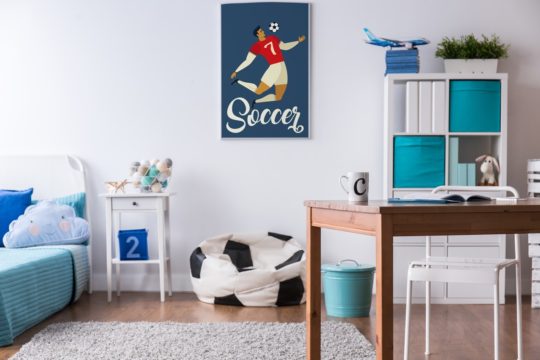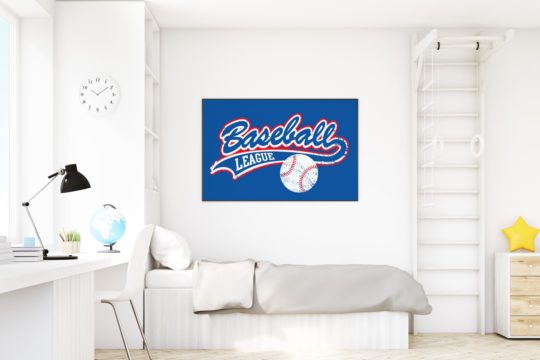
In order to create an original arrangement for a boy’s room, you need a lot of creativity and knowledge about children’s needs and development. The interior will have to serve several different functions. It should be both educational and entertaining. Essential design elements for a boy’s room include multi-purpose furniture and decorations such as a sports poster. However, you should also be careful not to overdecorate the space. Here’s some helpful advice on how to arrange a child’s bedroom.
Boy’s room arrangement 101

You’ll find more sport-inspired posters here: https://myloview.com/posters/by-category/sport/
When decorating a space of this kind, make sure to follow a few basic decorative rules. They will make your child feel more comfortable in their room and improve their overall well-being. In addition, they will also help your little one focus and have a positive impact on their cognitive abilities. According to these rules, a perfect boy’s room should be:
- ergonomic (the desk should be of appropriate height and size and the distance from your child’s eye to the computer screen should be between 20 to 40 inches),
- convenient (use multi-purpose, minimalistic furniture, as it allows you to quickly refresh the room or easily rearrange it to create more space),
- clean (choose those types of flooring, paint, and wallpaper which can be easily cleaned),
- safe (if the room features an entresol or gym equipment, make sure that there are soft panels on the walls and a wall-to-wall carpet or cushioned flooring),
- comfortable (the floor should be soft and pleasant to touch and should act as an insulator; complement the design with furniture and accessories made of natural materials, such as wood and wool.)
A child’s room usually includes several distinct areas. If the interior is very spacious, you can physically divide it using partition walls. Otherwise, you may want to differentiate particular areas devoted to playing, studying, and sleeping using colors.
A blaze of saturated colors or soft pastel hues (?) – ideal colors for a boy’s room

If the interior is already full of fantastic decorations and accessories such as a sports event poster, a rope swing, or model planes, the design needs to be complemented with appropriate colors. Consider using the 70%x20%x10% rule. 70% of the space should be dedicated to a dominating color, 20% to a supplementary color, and 10% to a contrastive color. Beige and gray are incredible candidates for the dominating color (white isn’t the best idea, since it gets dirty easily.) The supplementary color should also be rather soft. Consider pastel hues of green, light blue, or purple. As far as the contrastive color is concerned, you can’t go wrong with navy blue or maroon.
The perfect choice of color often depends on the child’s age. For younger boys, it’s better to use softer, pastel hues. Teenagers will definitely find stronger, expressive colors more appealing and maybe even wish to have their ceiling painted as well. If you want the room to look neat and modern, decorate the walls with a geometric wallpaper or wall murals depicting your child’s favorite cartoon characters. Remember not to go overboard with the decor. The color scheme should be limited to 3 or 4 colors.
Quintessential accessories for a boy’s room

If you want to help your child develop their cognitive skills, there are a few types of accessories that you should consider:
- labyrinth wall murals which improve concentration and may also include other educational games,
- illuminated alphabet boards, featuring letters that can be rearranged to form words,
- hobby-related decorations, such as a sports poster.
If you want to encourage your child to spend more time outside, it might be a good idea to introduce elements such as a baseball glove, a basketball, or rollerblades into the arrangement. Put these items on display so that they’re easily accessible. Participating in sports activities has a beneficial effect on our health but also satisfies other needs such as the need to be part of a group or to be accepted.


















